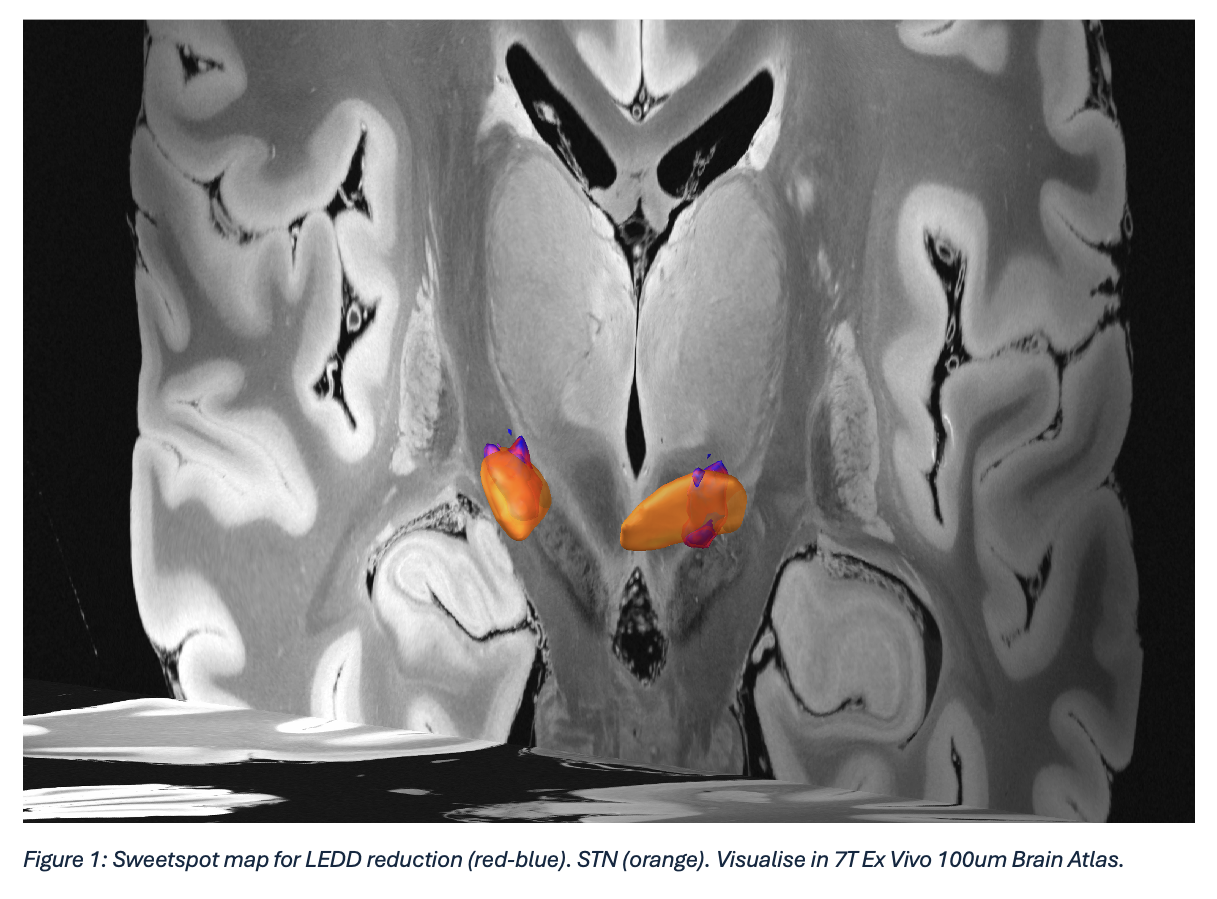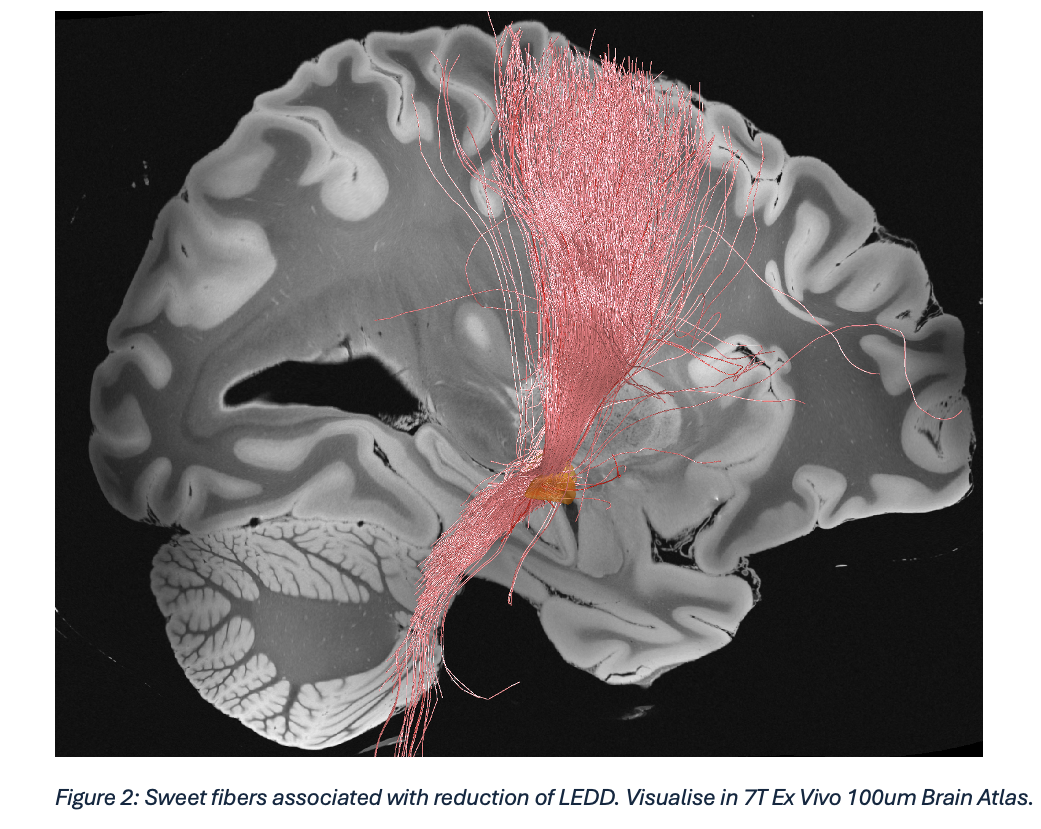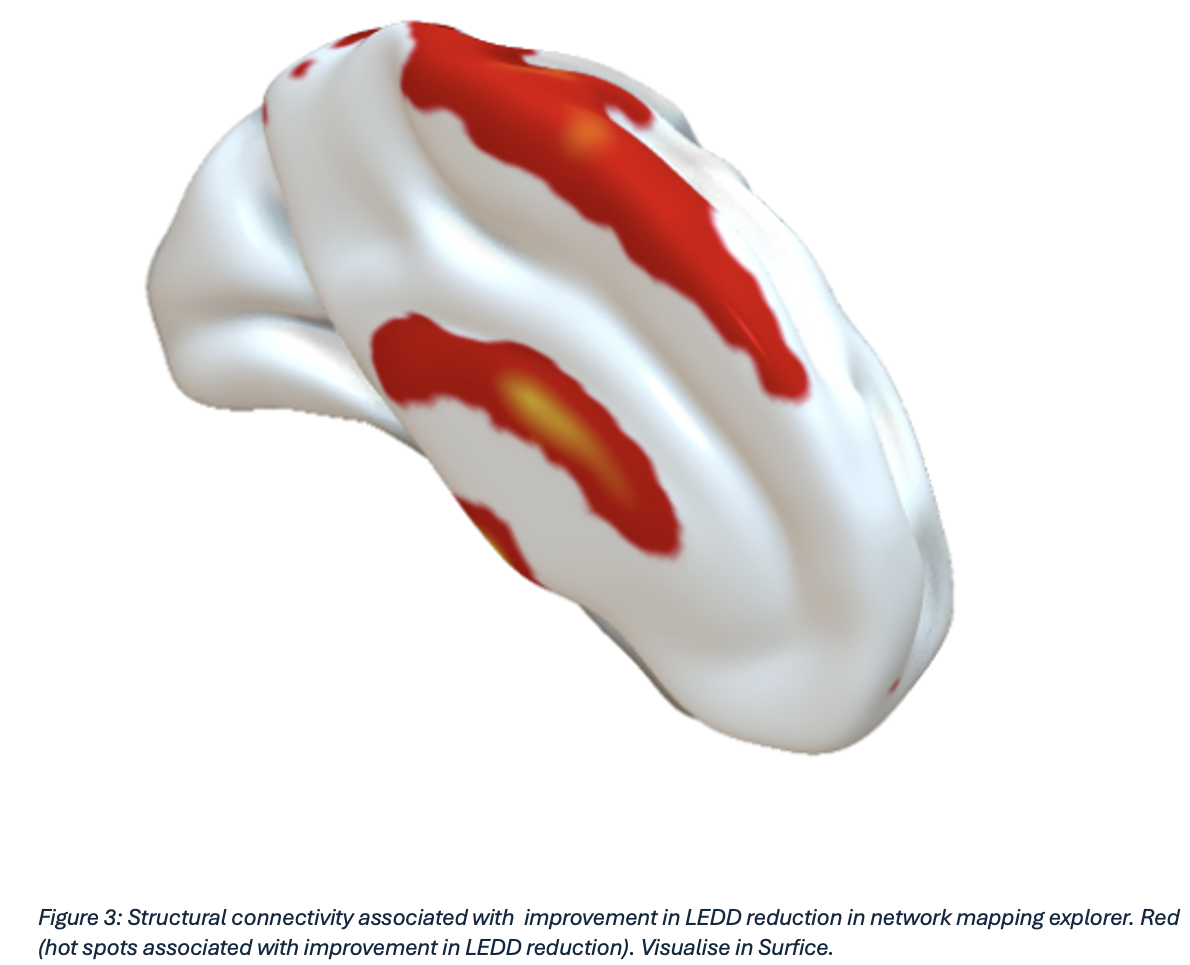Category: Parkinson's Disease: Neuroimaging
Objective: To describe the relationship between structural connectivity and it´s effect on change in levodopa equivalent daily dose (LEDD) in patients 6 months after subthalamic nucleus (STN) deep brain stimulation (DBS) implantation.
Background: Deep brain stimulation (DBS) of the subthalamic nucleus (STN) provides an effective treatment for advanced forms of Parkinson’s disease (PD) and is associated with a reduction of dopaminergic medication.1 In addition to the correct localization of electrodes, structural connectivity of STN plays an important role in the effectiveness of DBS. 2 One of the key predictors of beneficial outcome of DBS in PD is the connectivity between STN and supplementary motor area (SMA), which was considered as predictor of beneficial outcome of DBS.1 However, the relationship between dopaminergic reduction after DBS in relation to structural connectivity between STN and SMA has not been investigated.
Method: Seven patients with Parkinson’s disease with a mean disease duration of 6.4 years and a mean age of 58.1 years were enrolled in the study. To determine anatomical and network correlates associated with reduction of LEDD (preoperative (MedON)/ postoperative StimON after 6 months), voxel-wise sweet spot mapping and normative structural connectivity analysis via Lead-DBS software were carried out using the outcome of 6 month treatment by STN-DBS. For statistical analyses we use Pearson correlation calculated by cross-validation model of leave nothing out (1000 permutaion) model.
Results: The mean reduction in LEDD intake in patients enrolled in the study was 47%. Sweet spot mapping revealed optimal location for LEDD improvement in the dorsolateral STN location. Using fiberfilterring tool for identify observed changes shown positively correlation with significance (LEDD change R=0,86, p=0,012) for fibers to supplementary motor area (SMA). Subsequent use of the network mapping tool for demonstrating structural connectivity of STN-SMA show a strong correlation and significance between network score and empirical improvement in LEDD reduction (R=0.75, p=0.057).
Conclusion: This study suggests that stimulating of STN, receiving input from SMA is associated with reduction in LEDD after 6 months of STN-DBS implantation.
Sweetspot
Sweet fibers
Structural connectivity
References: 1. SAMURA, K. et al. Predictive Factors of Antiparkinsonian Drug Reduction after Subthalamic Stimulation for Parkinson’s Disease. Neurol. Med. Chir. (Tokyo) 59, 331–336 (2019).
2. Horn, A. et al. Connectivity Predicts deep brain stimulation outcome in Parkinson disease. Ann. Neurol. 82, 67–78 (2017).
To cite this abstract in AMA style:
š. Janovič, D. Kroneberg, B. Al-Fatly, A. Kušnírová, Z. Košutzká. Analysis of structural connectivity in relation to change in dopaminergic medication after 6 months of STN-DBS in Parkinson´s disease – a pilot study [abstract]. Mov Disord. 2024; 39 (suppl 1). https://www.mdsabstracts.org/abstract/analysis-of-structural-connectivity-in-relation-to-change-in-dopaminergic-medication-after-6-months-of-stn-dbs-in-parkinsons-disease-a-pilot-study/. Accessed December 5, 2025.« Back to 2024 International Congress
MDS Abstracts - https://www.mdsabstracts.org/abstract/analysis-of-structural-connectivity-in-relation-to-change-in-dopaminergic-medication-after-6-months-of-stn-dbs-in-parkinsons-disease-a-pilot-study/



